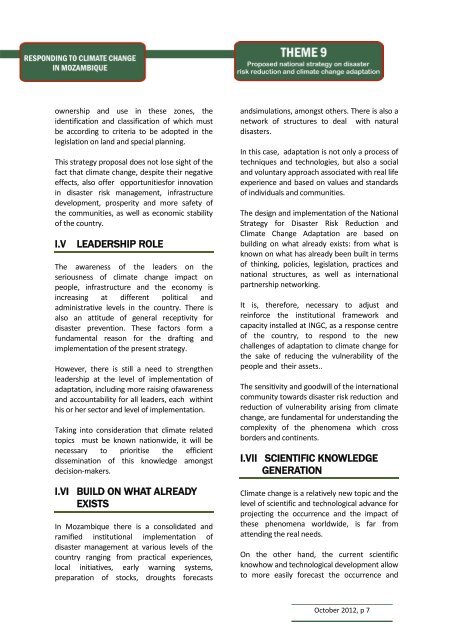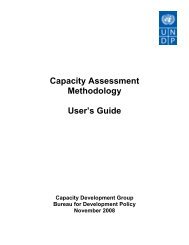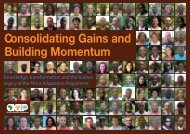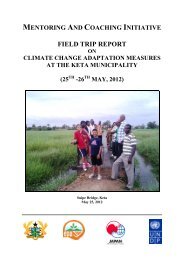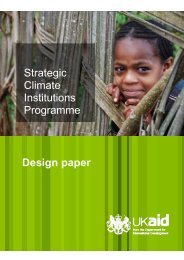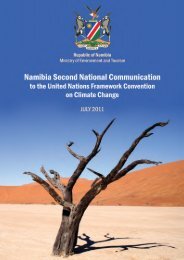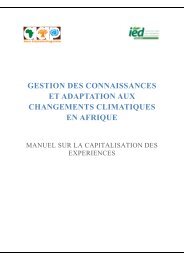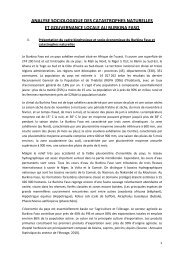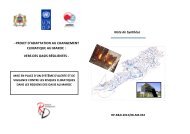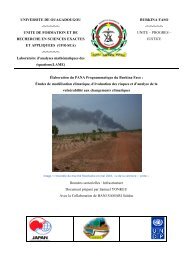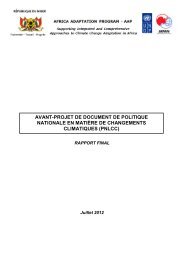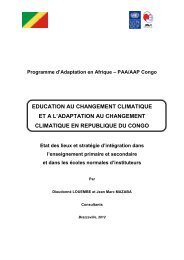Theme 9 Strategy ENG.pdf - Africa Adaptation Programme
Theme 9 Strategy ENG.pdf - Africa Adaptation Programme
Theme 9 Strategy ENG.pdf - Africa Adaptation Programme
- No tags were found...
You also want an ePaper? Increase the reach of your titles
YUMPU automatically turns print PDFs into web optimized ePapers that Google loves.
ownership and use in these zones, theidentification and classification of which mustbe according to criteria to be adopted in thelegislation on land and special planning.This strategy proposal does not lose sight of thefact that climate change, despite their negativeeffects, also offer opportunitiesfor innovationin disaster risk management, infrastructuredevelopment, prosperity and more safety ofthe communities, as well as economic stabilityof the country.I.V LEADERSHIP ROLEThe awareness of the leaders on theseriousness of climate change impact onpeople, infrastructure and the economy isincreasing at different political andadministrative levels in the country. There isalso an attitude of general receptivity fordisaster prevention. These factors form afundamental reason for the drafting andimplementation of the present strategy.However, there is still a need to strengthenleadership at the level of implementation ofadaptation, including more raising ofawarenessand accountability for all leaders, each withinthis or her sector and level of implementation.Taking into consideration that climate relatedtopics must be known nationwide, it will benecessary to prioritise the efficientdissemination of this knowledge amongstdecision-makers.I.VI BUILD ON WHAT ALREADYEXISTSIn Mozambique there is a consolidated andramified institutional implementation ofdisaster management at various levels of thecountry ranging from practical experiences,local initiatives, early warning systems,preparation of stocks, droughts forecastsandsimulations, amongst others. There is also anetwork of structures to deal with naturaldisasters.In this case, adaptation is not only a process oftechniques and technologies, but also a socialand voluntary approach associated with real lifeexperience and based on values and standardsof individuals and communities.The design and implementation of the National<strong>Strategy</strong> for Disaster Risk Reduction andClimate Change <strong>Adaptation</strong> are based onbuilding on what already exists: from what isknown on what has already been built in termsof thinking, policies, legislation, practices andnational structures, as well as internationalpartnership networking.It is, therefore, necessary to adjust andreinforce the institutional framework andcapacity installed at INGC, as a response centreof the country, to respond to the newchallenges of adaptation to climate change forthe sake of reducing the vulnerability of thepeople and their assets..The sensitivity and goodwill of the internationalcommunity towards disaster risk reduction andreduction of vulnerability arising from climatechange, are fundamental for understanding thecomplexity of the phenomena which crossborders and continents.I.VII SCIENTIFIC KNOWLEDGEGENERATIONClimate change is a relatively new topic and thelevel of scientific and technological advance forprojecting the occurrence and the impact ofthese phenomena worldwide, is far fromattending the real needs.On the other hand, the current scientificknowhow and technological development allowto more easily forecast the occurrence andOctober 2012, p 7


